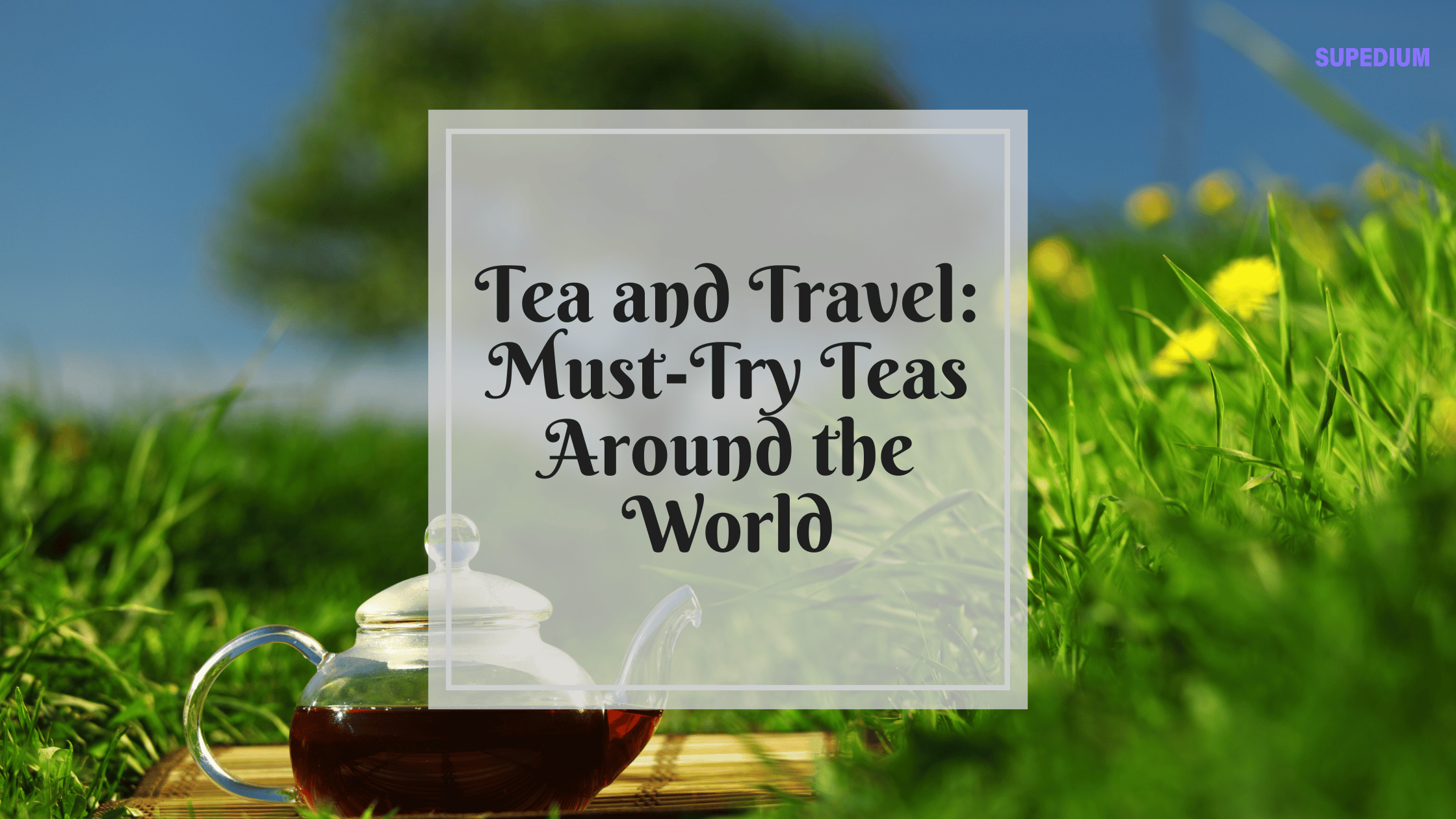Table of Contents
![]()
Introduction
Tea is more than just a beverage; it’s a cultural phenomenon that has transcended borders and centuries. From ancient ceremonies to modern tea houses, this beloved drink has woven itself into the fabric of societies around the globe. As we embark on a journey to explore must-try teas from various countries, we’ll discover not only unique flavors but also the stories and traditions that accompany them.
The History of Tea
The origins of tea date back to ancient China, where it was initially consumed for its medicinal properties. Over the centuries, tea spread to neighboring countries and eventually to Europe, the Americas, and beyond. Each region has adapted its tea culture, developing distinctive rituals and practices. Today, tea is a symbol of hospitality, friendship, and community, celebrated in ceremonies and enjoyed in everyday life.
Must-Try Teas by Region
A. Asia
1. China
- Green Tea (Longjing): Known for its delicate, grassy flavor, Longjing, or Dragon Well tea, is hand-picked in Hangzhou and is a staple in Chinese tea culture.
- Black Tea (Keemun): This aromatic black tea, grown in Qimen, boasts a rich flavor profile with hints of cocoa and fruit.
- Oolong Tea (Tieguanyin): A semi-oxidized tea, Tieguanyin, or Iron Goddess of Mercy, offers a floral aroma and complex taste, beloved by connoisseurs.
- Herbal Tea (Chrysanthemum): Often enjoyed for its refreshing qualities, chrysanthemum tea is a caffeine-free herbal infusion popular in China.
2. Japan
- Matcha: This finely ground green tea powder is central to the traditional Japanese tea ceremony and is celebrated for its vibrant color and umami flavor.
- Sencha: The most popular green tea in Japan, Sencha is steamed during processing, resulting in a fresh and grassy flavor.
- Genmaicha: A blend of green tea and roasted brown rice, Genmaicha has a unique, nutty flavor and is often enjoyed with meals.
3. India
- Masala Chai: A fragrant spiced tea made with black tea, milk, and a blend of spices like cardamom, cinnamon, and ginger, Masala Chai is a staple in Indian households.
- Darjeeling Tea: Often referred to as the “Champagne of teas,” Darjeeling is grown in the foothills of the Himalayas and has a floral and fruity taste.
- Assam Tea: Known for its bold, malty flavor, Assam tea is primarily grown in the northeastern state of Assam and is a key component of breakfast teas.
4. Taiwan
- Bubble Tea (Boba): Originating in Taiwan, bubble tea features chewy tapioca pearls and can be made with various tea bases, sweeteners, and flavors.
- High Mountain Oolong: Grown in the high altitudes of Taiwan, this oolong tea is prized for its sweet, creamy flavor and floral notes.
B. Middle East
1. Turkey
- Turkish Tea (Çay): Brewed in a unique double teapot, Turkish tea is strong, served in small tulip-shaped glasses, and enjoyed throughout the day.
2. Morocco
- Moroccan Mint Tea (Atay): A refreshing green tea brewed with fresh mint leaves and sugar, Atay is a symbol of hospitality in Moroccan culture.
3. Iran
- Persian Tea (Chai): Typically black tea served with sugar or sweets, Persian tea is an integral part of social gatherings and meals.
C. Europe
1. United Kingdom
- English Breakfast Tea: A robust blend of black teas, this classic is traditionally enjoyed with milk and is a staple of British breakfasts.
- Earl Grey: Flavored with bergamot oil, Earl Grey is a fragrant black tea that has gained popularity around the world.
- Afternoon Tea: This elegant ritual involves a selection of teas served with finger sandwiches, scones, and pastries, epitomizing British culture.
2. Russia
- Russian Caravan Tea: A smoky black tea blend, often enjoyed with sugar or jam, reflecting the historical trade routes between China and Russia.
3. Ireland
- Irish Breakfast Tea: Stronger than its English counterpart, Irish Breakfast tea is typically enjoyed with milk and is a beloved morning staple.
D. Africa
1. Kenya
- Kenyan Black Tea: Known for its bold flavor and vibrant color, Kenyan black tea is a key export and is often enjoyed with milk.
2. South Africa
- Rooibos Tea: Naturally caffeine-free, rooibos has a rich, earthy flavor and is often enjoyed with milk or honey.
E. The Americas
1. United States
- Sweet Tea (Southern Style): A quintessential Southern beverage, sweet tea is brewed and then sweetened with sugar while still warm, often served over ice.
- Iced Tea: A popular summertime drink, iced tea can be sweetened or flavored, and it’s a refreshing choice across the country.
2. Argentina
- Mate: A traditional herbal drink made from the leaves of the yerba mate plant, mate is shared among friends and family, often sipped from a gourd using a bombilla.
Unique Tea Experiences
Traveling to experience tea culture is a journey in itself. Engage in tea ceremonies in Japan, where the meticulous preparation and presentation elevate the act of drinking tea to an art form. Visit tea houses in Kyoto or Hangzhou, where tranquil settings enhance the experience. Enjoy traditional afternoon tea in London, complete with delectable pastries. For those interested in the craft, participate in tea tastings and learn about the nuances of different brews.
Health Benefits of Tea
Beyond its cultural significance, tea offers numerous health benefits. Rich in antioxidants, various teas can contribute to overall wellness. Green tea, for instance, is known for boosting metabolism, while herbal teas can aid digestion and promote relaxation. Understanding the specific benefits of different teas can enhance not only your travel experience but also your daily wellness routine.
How to Incorporate Global Teas into Your Travel
When traveling, seek out local tea shops and markets to discover regional specialties. Participating in tea tastings or guided tours can deepen your appreciation of local flavors and traditions. Connecting with the local culture through tea can lead to meaningful experiences and friendships, making your travels even more memorable.
Conclusion
The journey through the world of tea is as diverse as the cultures that embrace it. From the delicate flavors of Japanese matcha to the boldness of Indian chai, each tea tells a story. As you explore these global flavors, remember that tea is not just about taste—it’s about connection, community, and the shared moments that bring us together. So, pack your bags, grab your favorite tea accessories, and set off on a flavorful adventure around the world.
Share This





Be the first to comment